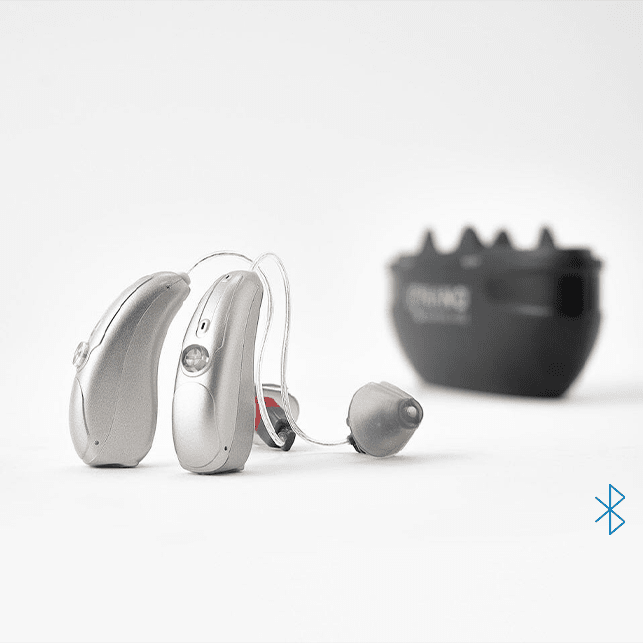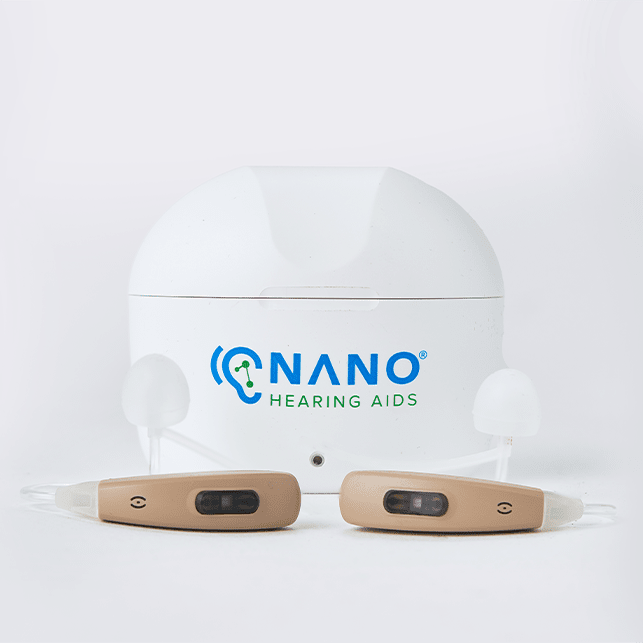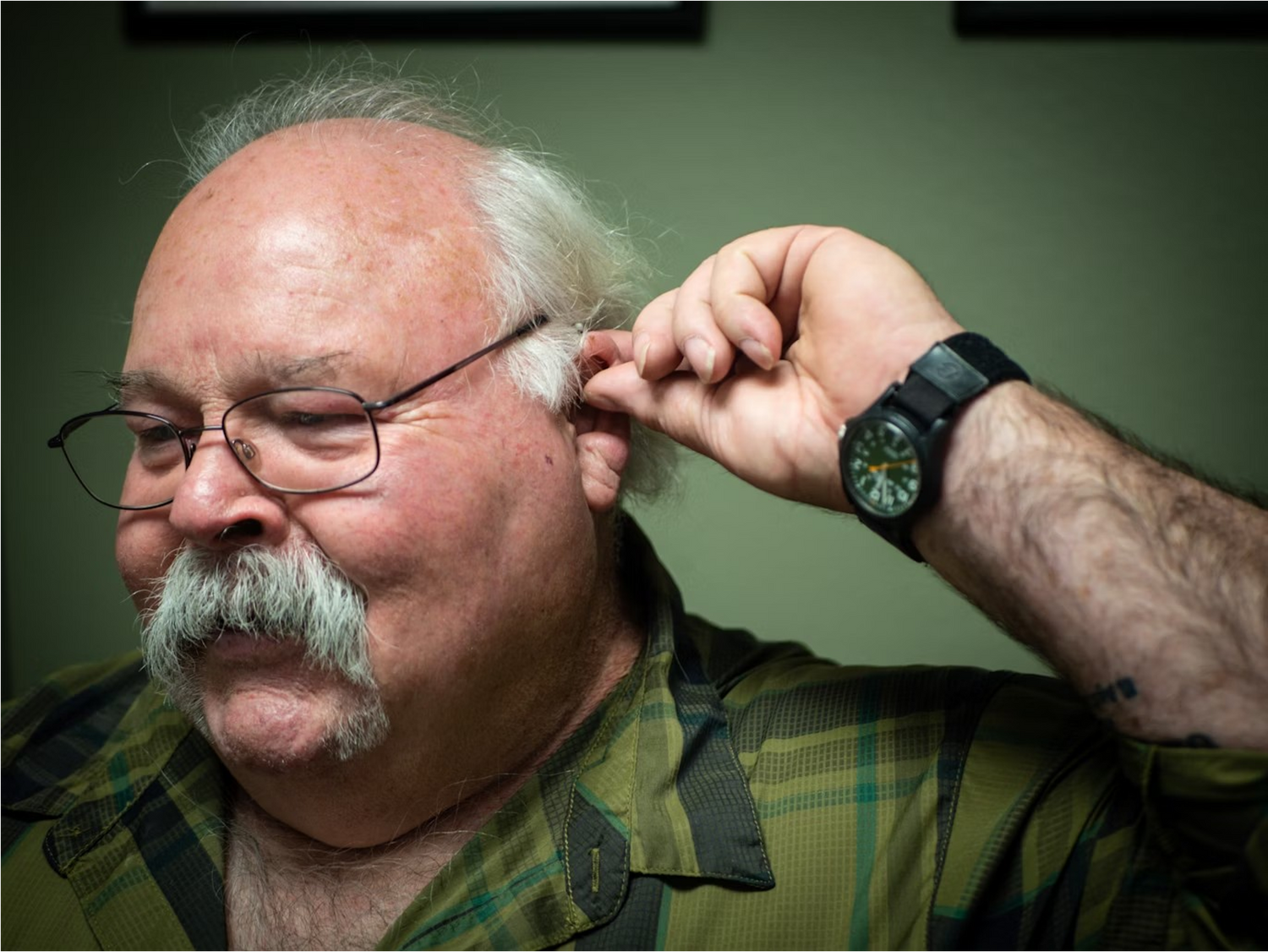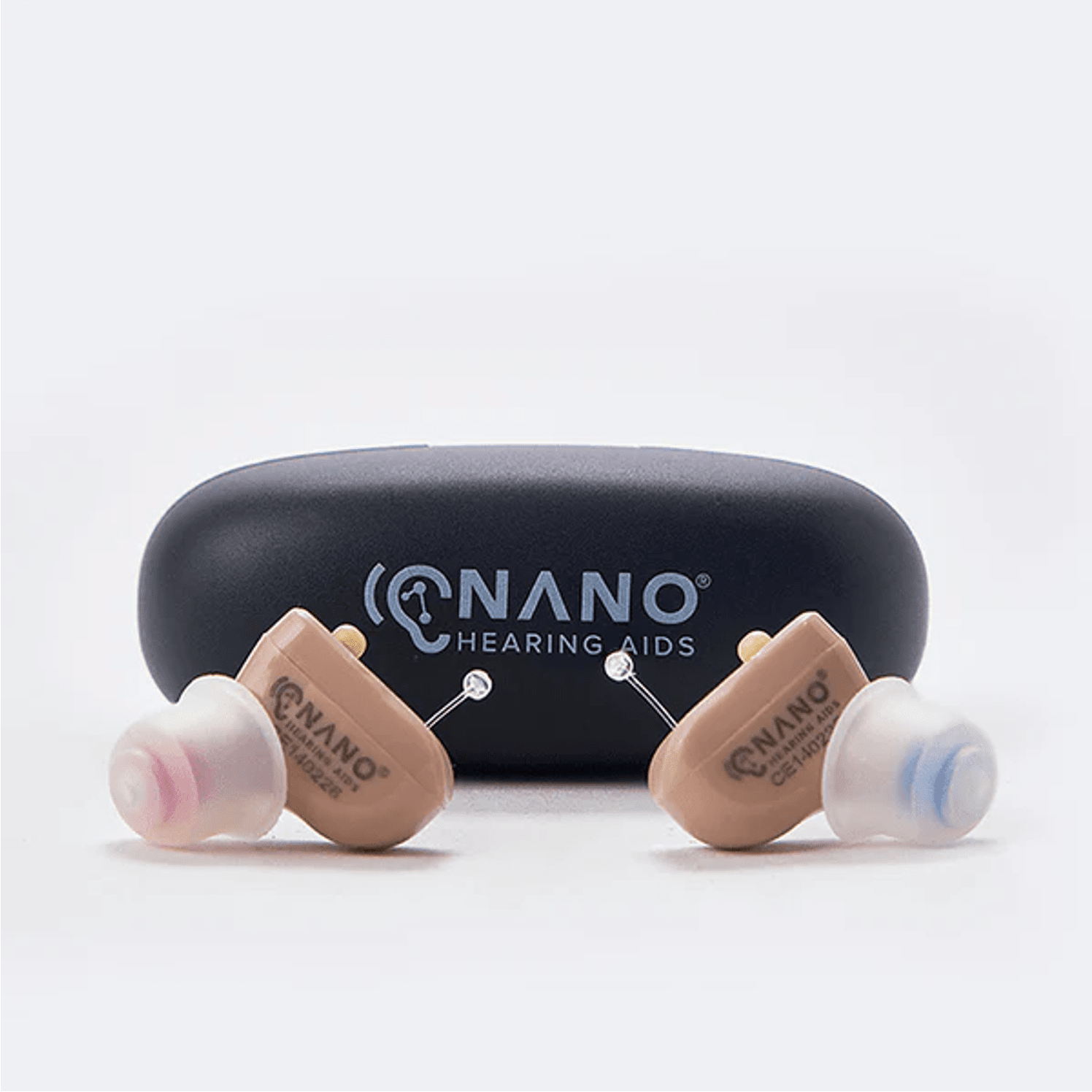Key Takeaways
- Barrel-like sounds in hearing aids are often caused by the occlusion effect.
- Improper fit and sealing of the hearing aid can amplify body-generated sounds.
- Simple adjustments to the fit or venting can alleviate the issue.
- Nano Hearing Aids' First Ear Plus ITE model features adjustable venting and a customizable fit, designed to reduce barrel-like sounds and provide a more natural hearing experience.
NANO Hearing Aids are FDA-registered, Class I devices. Our OTC hearing aids are designed for individuals over 18 years of age with perceived mild to moderate hearing impairment. With prices starting at just $297, they offer a viable solution for those looking to improve their hearing without breaking the bank.
Ways to Fix Barrel-Like Sounds in Hearing Aids
Common Reasons for Barrel-Like Sounds
The barrel-like sound often results from the occlusion effect, where the hearing aid or earpiece blocks the ear canal, trapping and amplifying low-frequency sounds like your own voice, creating that hollow, echoey sensation. Improper fit, incorrect settings, and certain hearing aid features can also contribute to this issue.
Methods to Diagnose the Issue
- Check the Fit: Ensure the hearing aid fits snugly in your ear—a loose fit can cause sound leakage, leading to the barrel-like effect.
- Inspect the Vents: Look at the vents in your hearing aid—if blocked or too small, they might be causing the occlusion effect.
- Test Different Settings: Adjust the settings on your hearing aid, as tweaking gain or frequency settings can make a big difference.
- Use the Fitting Assistant: Utilize the fitting assistant tool to fine-tune the device based on your needs.
The Occlusion Effect: Common Culprit
The occlusion effect is a primary reason why your hearing aid might sound like it's in a barrel. When your ear canal is blocked by a hearing aid, sound waves from your voice get trapped inside and amplified, creating that hollow, echoey sensation. This effect is more noticeable if you have good low-frequency hearing.
Symptoms of Occlusion
- Your own voice sounds boomy or hollow.
- You hear an echo when you speak.
- Body-generated sounds like chewing or footsteps are unusually loud.
Diagnosing Occlusion with Simple Tests
- Hum or speak while covering and uncovering your ears—if your voice sounds different when your ears are covered, occlusion might be the cause.
- Try different hearing aids or earpieces—if the barrel-like sound disappears with a different device, your current hearing aid might be causing the occlusion effect.
Adjusting Fit and Vents
- Ensure your hearing aid fits snugly but comfortably—a loose fit can cause sound leakage, while a tight fit can trap sound inside.
- Check the vents—if blocked, clean them out; if too small, consider a hearing aid with larger vents to reduce the occlusion effect.
How Directionality Impacts Your Voice
Directionality focuses on sounds from a specific direction, often the front—it can make your voice sound louder or more echoey. Adjust the directionality settings by switching between omnidirectional (all directions) and directional (one direction) modes to find a balance that makes your voice sound more natural.
Effect of Frequency Lowering and Shifting Algorithms
Frequency lowering shifts high-pitched sounds to a lower frequency range—this can make your voice sound deeper or distorted. If this is the issue, try disabling the frequency-lowering feature and see if it makes a difference. Consult the user manual or a hearing health professional for guidance on adjusting these settings.
Frequency lowering and shifting algorithms can impact sound quality—adjustments may be needed to reduce barrel-like effects.
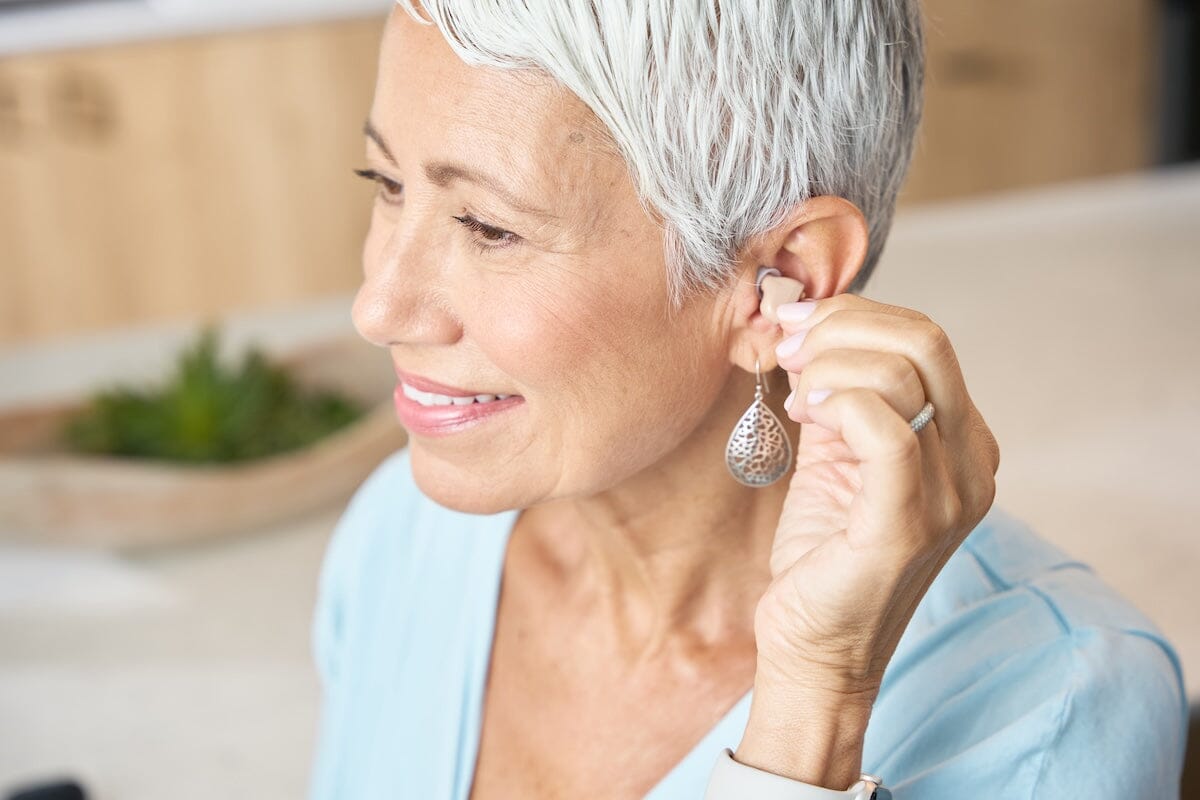
Amplification Issues: Low vs High Frequency
Improper amplification settings can make it sound as if your voice is echoing, like you're speaking inside a barrel. Both low and high-frequency amplification affect how you perceive your own voice.
Detecting High-Frequency Amplification Problems
Over-amplifying high-frequency sounds can make your voice sound tinny or sharp. You might also notice high-pitched sounds, like birds chirping or alarms, becoming uncomfortably loud. To address this, reduce the high-frequency gain in your hearing aid settings. Most hearing aids allow you to adjust the gain for different frequency ranges, enabling fine-tuning to your preference.
Adjusting Low-Frequency Amplification
Over-amplifying low-frequency sounds can make your voice sound boomy or muffled. While this is often due to the occlusion effect, excessive low-frequency gain can also be a factor. To fix this, reduce the low-frequency gain in your hearing aid settings. Increasing the compression ratio can also help balance loud and soft sounds.
Small adjustments can make a big difference, so make changes incrementally and test how they affect your hearing experience.
Fixing the Problem: Simple Solutions
Adjusting the Fit of Your Hearing Aid
- Ensure a Snug Fit: Make sure your hearing aid fits snugly without discomfort—a loose fit can cause sound leakage, while a tight fit can trap sound.
- Check the Earmold: If you're using a custom earmold, ensure it fits properly—adjust or remake it if needed.
- Use Different Domes: If your hearing aid uses domes, try different sizes and styles to find the best fit.
- Inspect the Tubing: For behind-the-ear hearing aids, check the tubing for blockages or damage that might affect sound quality.
These adjustments can make a significant difference in sound quality.
Preventive Measures
Regular Maintenance and Care
- Clean Your Hearing Aid Daily: Use a soft, dry cloth to remove earwax and debris.
- Check for Blockages: Inspect vents and tubing regularly—use a small brush or cleaning tool to remove obstructions.
- Store Properly: Keep your hearing aid in a dry, cool place—avoid moisture and extreme temperatures.
- Replace Batteries: Monitor battery life and replace them as needed—weak batteries can affect performance.
Monitoring Changes in Hearing Ability
- Difficulty Hearing: If conversations or background noises become harder to hear, your hearing aid might need adjustment.
- Changes in Sound Quality: Distorted sounds or a different perception of your voice may indicate it's time for a tune-up.
- Physical Discomfort: If your hearing aid causes discomfort or pain, it may need a proper fitting.
How Nano Hearing Aids Can Help
Nano First Ear Plus ITE OTC hearing aids
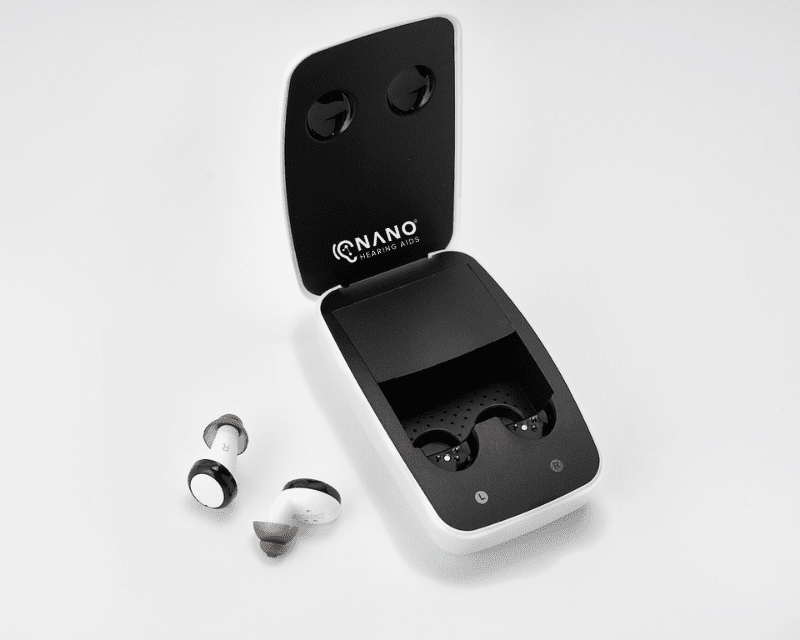
At Nano Hearing Aids, we understand the challenges of using hearing aids and provide solutions to enhance your hearing experience. Our hearing aids are FDA-registered, Class I devices, ensuring safety and effectiveness for adults with perceived mild to moderate hearing loss.
Devices like the First Ear Plus ITE offer customizable settings, helping to reduce issues like barrel-like sounds. Available over-the-counter, our hearing aids offer accessibility without the need for a prescription or professional intervention.
By choosing Nano Hearing Aids, particularly our First Ear Plus ITE model, you can enjoy a better hearing experience with devices designed to meet your unique needs and resolve common issues like barrel-like sounds.
Frequently Asked Questions (FAQ)
How can I tell if occlusion is my problem?
Cover and uncover your ears while speaking—if your voice sounds different when your ears are covered, occlusion is likely the cause. Consult a hearing health professional for a more accurate diagnosis.
Can I fix the barrel sound by myself?
Yes, you can try adjusting the fit of your hearing aid, cleaning the vents, and using the manufacturer's fitting assistant to fine-tune the settings.
Are there any long-term solutions to prevent the barrel-like sound?
Regular maintenance and proper fitting can provide long-term solutions to prevent the barrel-like sound. Choosing a high-quality hearing aid and making necessary adjustments can also help you ensure a better hearing experience.
Why Should I Choose Nano Hearing Aids?
Our devices, including the First Ear Plus ITE, are built for comfort and customizable to meet your specific hearing needs. With a focus on delivering clear sound and improving your overall hearing experience, Nano Hearing Aids stands out as a trusted choice.

